1971-1974 Holden HQ GTS 350 Monaro Buyer's Guide





































|

|

|

|

|

|

|

|

|

|

|

|

|

|

|

|

|

|
Quite a departure from the early Monaros, the HQ went on to become a worthy standard bearer for Holden's coupe series
Holden HQ GTS 350 Monaro
Few will deny that Holden’s Monaro, when it appeared in 1968, ranked as the most significant new concept in Australian automotive history. No manufacturer in this country had ever offered such a range of engine, transmission and trim in combination with a shape that commanded hypnotic attention.
Yet just three years would pass before the second-generation HQ Monaro set a new benchmark with its head-snapping style.

The two-door HQ that appeared in July 1971 was in its own way every bit as spectacular as the HK. The fastback profile was replaced in the HQ by a squarer C-pillar and distinctive wrap-over rear window which modernised the shape while maintaining the model’s inviting pillarless look. No prizes though for predicting that the two-door HQ would in time be joined by a sedan.
| Toybox: 1971 Holden Monaro HQ LS
The 350 cubic-inch, 5.7-litre Chevrolet V8 was offered only to buyers of GTS and LS-spec Monaros. With no further need for a big and powerful car to undertake competition duty, the output of the 5.7-litre motor was pared back from 224kW in the HG manual to a still-effective 205kW.
Installing a 350 in your GTS increased the price by a substantial $850. At $4630 the two-door remained slightly cheaper than the sedan that joined the range in early 1973. Then came the options.
 The stance says agility, the styling is smart and the twin pipes promise performance
The stance says agility, the styling is smart and the twin pipes promise performance
Standard GTS fittings included pressed steel sports wheels, a ‘turned metal’ dash and GTS steering wheel. A basic push-button radio cost $110 and laminated windscreen an extra $55.
| Buyer's guide: Holden HQ Premier
Power steering was offered as an option but only in conjunction with automatic transmission. Turns lock-to-lock reduced from a fairly snappy 3.7 in manual steer cars to a really rapid 2.6 with power steer. The downside was a loss of feel at the straight-ahead and tendency for inexperienced drivers to flick on too much opposite lock when the HQ – as they did frequently – got out of shape on a wet road. Radial tyres were standard but only on the GTS.

One of several road tests to feature the HQ Monaro 350 was by Modern Motor magazine and included an interesting insurance comparison between an LS and the GTS. Using quotes from the NRMA, a Sydney-based driver over 25 on maximum No-Claim bonus would pay $112 annually to cover a the 253-engined LS and just $12 more if you chose a GTS 350.
| 2017-18 Market review: Holden HQ-WB V8
Chev-engined HQs were most likely to be specified with three-speed Turbo-Hydramatic automatic transmission, however the performance heavy-hitter was still the Muncie four-speed manual. Top speeds were virtually identical (193km/h for the manual, 190 with the auto) but off the mark the four-speed was 0.7 seconds faster to 80km/h. By the time both cars reached 160km/h the manual had streaked to a three second advantage.
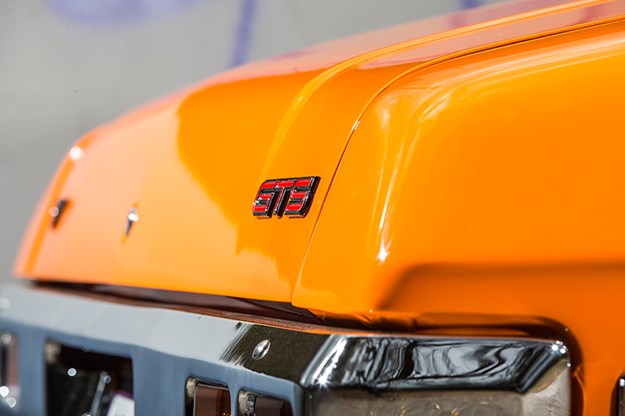
Back when hitting 140km/h while overtaking wasn’t going to cost your licence, the manual Monaro demonstrated a distinct advantage. While dead-heating at 2.7 seconds for the 50-80km/h dash, the four-speed car was more than a second faster in the 80-110km/h increment than the automatic.
A year before the world was thrown into turmoil by soaring fuel prices and oil shortages, anyone who even asked about economy while investigating GTS 350 ownership probably wasn’t all that serious about having one.
Circumstances today are different. With the 65 litre tank costing $1.60-1.80 per litre to refill (98 Premium is necessary) and draining itself at a rate approaching 22lt/100km a GTS doesn’t need to go very far at all for it to chew through $100 worth of fuel.

ON THE ROAD
All-coil suspension had been the mainstay of General Motors’ mid and large-sized cars for many years however the parent company avoided replacing rear leaf springs with coils in its Monaro-sized Camaro and Firebird.
In Australia the decision to change was taken with effect across the HQ passenger car range and that included the Monaro. In some respects the softer feel made HQ and later Monaros easier to drive than big-engined HK-HG versions but on rougher, tighter roads the HQ’s understeer became more pronounced.
 A lovely blend of muscle machine and city-car sophisticate
A lovely blend of muscle machine and city-car sophisticate
Buyers who couldn’t abandon the notion that cars like theirs should still be gridding up for the annual Bathurst stoush would naturally gravitate towards the manual HQ. Those who would rarely see an unrestricted road more often went for an auto with power steering
and perhaps an air-conditioner and still enjoyed themselves.
Road test writers praised the GTS seats for comfort but they surely could not have been including lateral grip in their evaluation because there is none.
Throw an HQ into a bend fast enough to induce tyre squeal and the flat vinyl seats with their optional ‘houndstooth’ cloth inserts would try to dump driver and passenger into the same corner of the cabin. Seat belts were supplied but in those days their use was a suggestion not a rule. Today’s inertia reel belts are a big help.
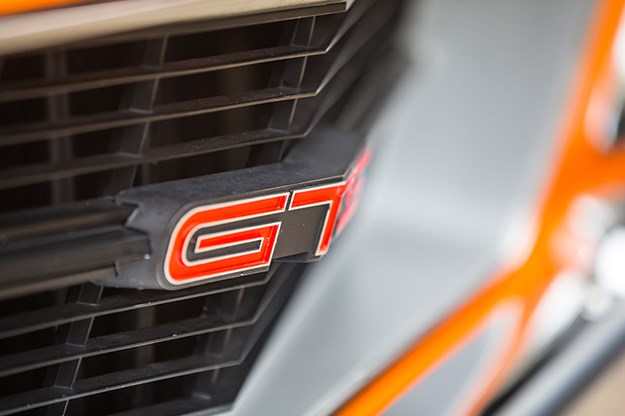
Visibility, especially in two-door cars, is outstanding although you do need to take a bit of a guess when parking as to where the edge of the boot lid is. The coupe doors are huge and heavy and if they don’t close without being lifted you might be facing problems with the hinge boxes.
Occupants who in the back of a Hardtop XA Falcon could see almost nothing enjoy a very decent view from the back seat of a two-door HQ. Those who choose the sedan as platform for their ‘350’ powertrain miss out on the panoramic views but do enjoy similarly generous levels of leg-room.
 The HQ’s driver presided over a cockpit that was up with the best of them in the analogue era
The HQ’s driver presided over a cockpit that was up with the best of them in the analogue era
Headlights are poor for a car with the performance potential of a GTS and an upgrade to halogens is worthwhile, even if the car will rarely leave the suburbs. Brakes are a bigger issue and can’t be improved significantly without compromising the authenticity of now-valuable vehicles.
Looking back to magazine tests when the HQ was new shows heavy weight transfer under maximum braking effort and locking of front and rear wheels – apparently quite at random depending on surface imperfections.

A remedy for the nose-down antics can be found at your local suspension centre while better-quality pads can slow the rate at which heat affects brake performance. However for really top stopping performance the only answer is a switch to rear-wheel discs.
Monaro owner - Joanne Miles
Joanne Miles owns the stunning Lone O’Ranger HQ as the result of a long search. She and partner Rob owned a couple of old Holdens and decided to pool their resources into one car. An HQ Monaro was the mutual decision, ideally a GTS 350.

"We searched for a long time in Australia," she says, "Then a friend put us on to an NZ site." There were several candidates including this one. There was only one thing for it, fly over to see the cars. "We went over in 2010 armed with a lot of information."
A true enthusiast, heavily involved with the Monaro club of NSW, Jo dived in to research the car’s history. The fact it had Australian rather than Kiwi compliance plates, plus an additional 000 ID code was odd. It seems this was a direct order from Holden’s Pagewood plant, rather than a customer order through an NZ dealer. It suggests the original buyer was a major dealer or had some other ‘pull’ with the factory.
After the original buyer, two women and one male have owned it. In fact the man Jo bought it from had owned it twice!
Back in Oz, a rolling resto started. It was in pretty good shape and made it to shows. Jo also spent time tracking down factory parts to replace some non-originals.
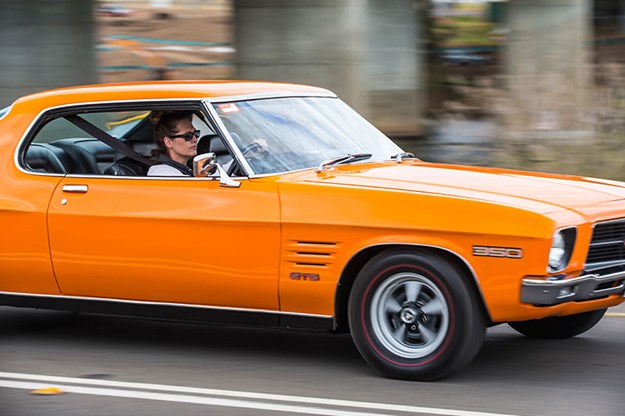
Over the years she’s relied on the expertise of a couple of key people. One, Greg Thackray, is unfortunately no longer with us. He was very much a mentor and a walking-talking HQ authority.
Another was Andy Lee, of HQ Restoration Supplies. He is apparently the gent you should talk to for HQ-HZ knowledge.
After eight years with the HQ, Jo has put it on the market, though she seems ambivalent about selling it. Who could blame her?
(The car is advertised in this mag - see page 49 - and online at tradeuniquecars.com.au.)

HQ GTS MONARO BUYING
Monaros with 350-cubic inch engines crop up frequently, however factory-built GTS 350s are far less common. In a market that has seen values for most Monaros expanding rapidly and consistently, an outstanding four-speed HQ has the ability to exceed $200,000.
Early GTS 350s were identified by a body prefix of 81837 but during 1972 the identifiers were changed. Car IDs can vary according to the factory which produced the vehicle, however the engine code should show as ‘QU’.
Proven show winners or cars with the potential to bag trophies in concours d’elegance competition can command even higher prices. Just remember, when buying with aspirations of show success, the role played by authenticity. A car that comes with non-standard components, even if they do make it handle, go and stop better is going to lose out except in ‘modified’ categories to one that is showroom-correct.
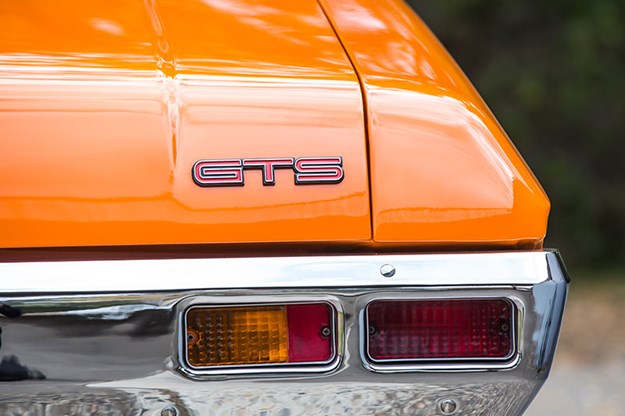
As we have seen recently, Australian cars that sell for prices well beyond predicted levels will invariably have documents that track their history. Being able to document a car right back to its original selling dealer makes a difference to desirability and the money realised.
If a car, especially one at the top of the pricing scale, comes with minimal documentation or inconsistencies in its history, avoid it or be prudent when bidding or negotiating. Should you buy a car like this, at some point in the future it will be you trying to explain the problems with its provenance.
VALUE RANGE HQ GTS 350 MONARO
FAIR: $75,000
GOOD: $125,000
EXCELLENT: $185,000 (4-speed)
(Note: exceptional cars will demand more)

BUYER'S CHECKLIST
Body & chassis
Genuine GTS 350s have sat high enough and for long enough in the value charts to justify quality restoration work, or at least confirmation that they don’t need any. That said, if you’re considering an outlay of $200K or more the cost of getting it to a reputable body shop for pre-purchase inspection is negligible. Look for bulges, bubbles and paint flaws, especially in the rear quarter panels, turret edges and sills. Underneath look at the floors for rust or impact damage. Reproduction bumpers can be found but it may be preferable (although more expensive) to have original brightwork repaired and re-chromed.
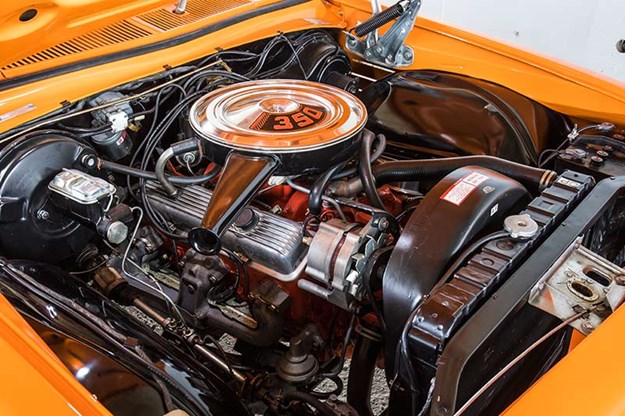 The 350 SBC V8 was rightly regarded as one of Detroit’s finest engines
The 350 SBC V8 was rightly regarded as one of Detroit’s finest engines
Engine & transmission
Small-block Chevrolet engines are among the most prolific and competent engines ever made. The trick before paying top money for a car with one of these engines is to have its authenticity (or otherwise) confirmed. There is no excuse given the relatively low cost of reconditioning for these engines to display faults of any kind including oil leaks. Modifications that affect visual authenticity should be reversed pre-sale in order to maximise a car’s value. Four-speed gearboxes are heavy by nature to use and can whine or send vibrations through the gear-lever. Clunks or clicking noises mean internal damage and be wary of a slipping clutch in seldom used cars.

Suspension & brakes
HQ Monaros have softer suspension settings than previous ‘Bathurst’ versions. After-market springs, bushings and shock absorbers can minimise body roll but don’t do much to enhance mid-bend grip or live rear axle problems on corrugated roads. If the front bounces unduly factor in the cost of some new shock absorbers, however cars with edge-worn tyres will be up for more costly work. Cars that have seen minimal use for several years might need attention to age-hardened suspension bushings. Standard brakes are OK for recreational driving however anyone who wants to have some fun on club ‘track days’ needs to look at after-market components, mated to bigger rims with low-profile rubber.
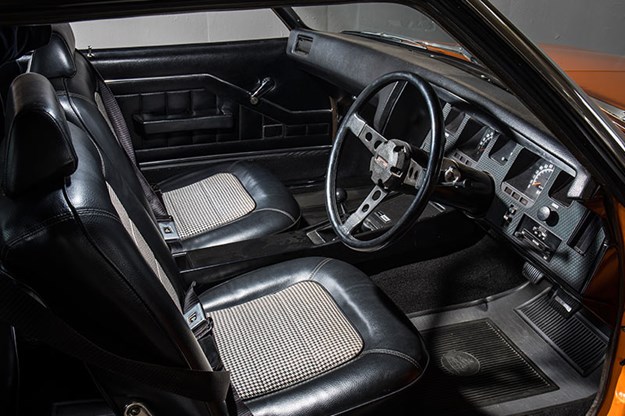 Optional houndstooth cloth inserts were the bee’s knees back in the day
Optional houndstooth cloth inserts were the bee’s knees back in the day
Interior & electrics
The interior is where an exceptional GTS can stand apart from ‘good for their age’ examples. Check seats for twisted frames and that they move easily on the runners and that seat-backs in two-door cars lock into place. Virtually any item required when returning a worn HQ interior to as-new is available. Sets of replacement seat vinyl cost $2000, with refurbished door cards at half that money. Dash components, new door hardware and hood-lining are being remanufactured. Check all electrical switches as a matter of course and that all the dash warning lights work. Wind down the rear quarter glass in two-door cars. Winders can jam from infrequent use but it may also indicate water entry and rusted window channels.
1971-1974 Holden HQ GTS 350 Monaro specs
NUMBER BUILT: 13,782
BODY: integrated body/chassis two-door coupe or four-door sedan
ENGINE: 5740cc V8 with overhead valves and Rochester 4V carburettor
POWER & TORQUE: 205kW @ 4800rpm, 486Nm @ 3200rpm (GTS 350 manual)
PERFORMANCE: 0-96km/h: 8.1 seconds, 0-400 metres 15.6 seconds (GTS 350 manual)
TRANSMISSION: 4-speed manual, 3-speed automatic
SUSPENSION: Independent with coil springs, wishbones, telescopic shock absorbers & anti-roll bar (f); live axle with coil springs, locating arms & telescopic shock absorbers (r)
BRAKES: disc (f) drum (r) with power assistance
TYRES: D70H14 radial
Unique Cars magazine Value Guides
Sell your car for free right here
Get your monthly fix of news, reviews and stories on the greatest cars and minds in the automotive world.
Subscribe

.jpg)













